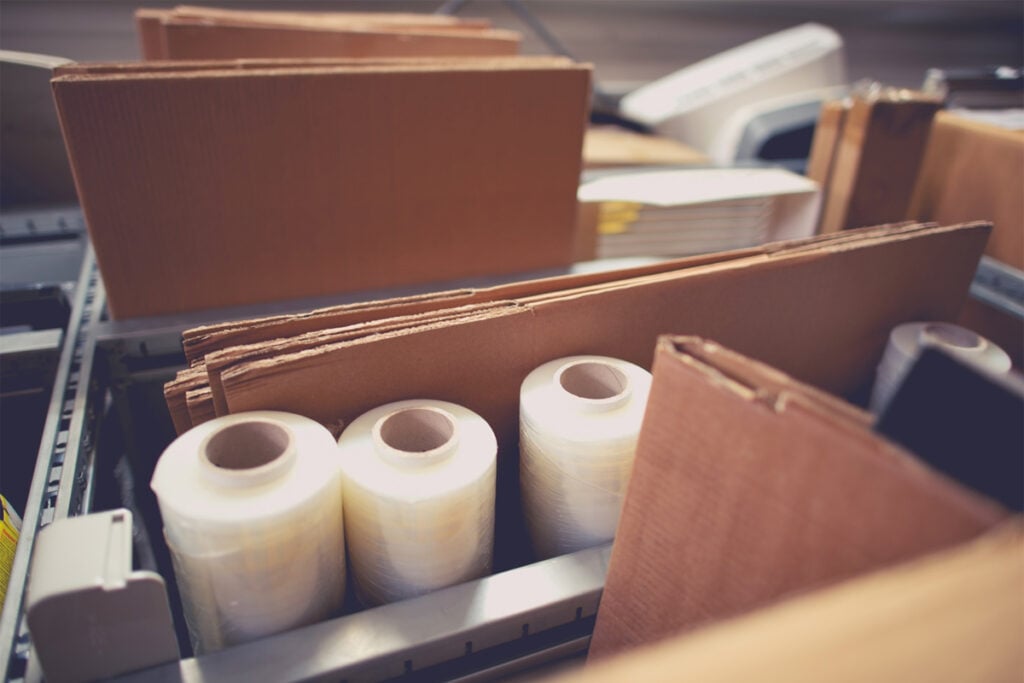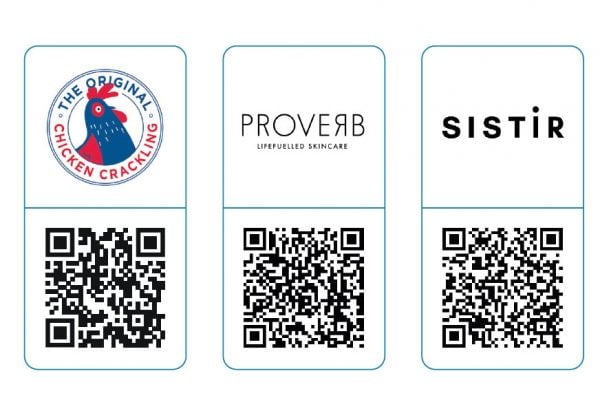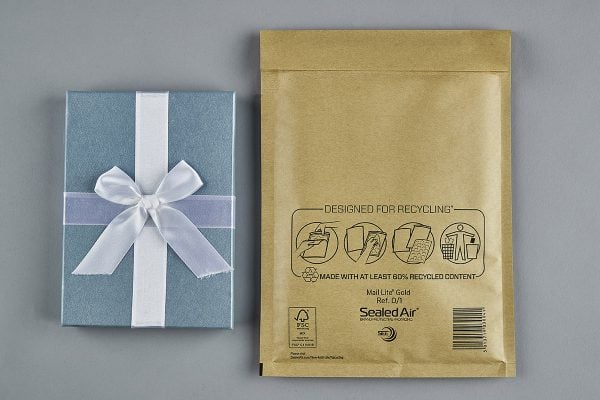Download or read online
This position paper on Packaging is available as a free download to read offline at your convenience, or carry on reading below.
Packaging
Every product which sells online must be shipped and that involves packaging of one description or another. A purely utilitarian usage to protect and contain the item, packaging is often overlooked as it can be so much more, and retailers should consider everything from protection to branding and how to delight the customer.
In this Position Paper we will examine the impact on the customer of packaging, the types of packaging available, how packaging can reinforce your brand and encourage social media interactions and environmental concerns.
Customer Experience
Often the first real touchpoint you have with a customer is when their purchase arrives and the carrier hands over a parcel on the doorstep. This is where their future relationship with you can be made or broken, as indeed can the contents of the parcel.
An item which is damaged in transit is by any measure a bad experience and, at least for some consumers, this can include the condition of the product box itself. Some retailers, especially on larger items, will simply apply the shipping label and a document enclosed wallet to the retail packaging of a product. Whilst this eliminates excess packaging, if the item is intended as a gift immediately results in an unhappy customer.
Equally, you may decide to eliminate retail packaging and present your goods as a brown box experience, but this too has it drawbacks. For some products unlikely to be gifted this represents no issue, but for others the retail packaging experience is part of the enjoyment of receiving a new item.
There are two main forms of packaging – retail packaging and protective packaging to prepare a product for shipping:
Retail Packaging
Retail Packaging can take many forms from basic blister packs – plastic shrink-wrap on card backing, to boxes, clear or opaque plastic bags to plain or colourful card boxes. The type of packaging you deem necessary for products you manufacture will depend largely on the product value, the protection requirements, how easy the product will be to store and ship and the experience you wish your customers to have.
Protective packaging
Boxes
A box can be so much more than just a box. Typically, in online retail white or beige cardboard boxes are used due to cost and retailers will stock a variety of sizes designed to accommodate most of their product lines in the minimum number of form factors. This leads to a requirement for fillers to protect products when oversized cartons are used.
Fillers
Fillers are available in a variety of forms ranging from bubble wrap and polystyrene beads to paper and paper straw. Naturally there’s a desire to limit the quantity of filler used as it’s an additional expense and once the item is delivered serves no additional purpose.
For some products, fillers will be designed in at the manufacture stage of a product, for instance it’s customary for glass or china items to be packaged in preformed expanded polystyrene and other product might be contained in stiff plastic trays within a box or even enclosed in plastic along with a card product information insert.
Tissue Paper
Tissue paper serves a dual purpose both as a dust protector and to make the unboxing experience more exciting and give an impression of value and care – it says the retailer has taken extra special care of this product ergo it has value.
Mailing bags and sacks
Products which come from the manufacturer in their own retail packaging need very little additional protection to prepare them for shipping. Poly mailing bags and sacks are one of the most cost-effective forms of protection and, out of all the options available, take up the least amount of space in a warehouse.
Bubble Mailers
Often called Jiffy Bags after one of the best-known manufacturers, bubble mailers offer an additional built in layer of protection over a simple envelope or mailing bag, are available in a wide variety of sizes and colours.
Tape
Many forms of packaging require sealing and typically retailer will us parcel tape for this. Available in a variety of sizes, the most common is 50mm wide available and is commonly available in clear, opaque and beige although a variety of coloured and printed take is available (e.g. ‘Fragile’ tape).
Stickers
Stickers aren’t strictly speaking a form of packaging but are a quick and effective way to add branding to packaging, whether used to seal tissue paper or added to the outside of other forms of packaging.
Branding
One of the most powerful uses of packaging can be to reinforce your brand. There is a cost implication which for small quantities can be prohibitive and likewise for low cost products may not be economically viable. However, boxes, mailing sacks and bubble bags can all be customised with pre-printed branding as an additional form of advertising.
Some retailers will take branded packaging to the next level, for instance whilst it may be perfectly acceptable to package items of clothing in a plastic bag and ship in a mailing bag, a premium shirt retailer may decide to package a shirt in a branded box with tissue paper and then protect this packaging with an outer mailing sack to protect the packaging itself.
Branded packaging can either be built into the manufacturing process or can be added at the point of shipping. Whilst costs will generally be less if branded packaging is done by the manufacturer, often this will increase the size of the product resulting in higher import costs and reducing warehouse space. The trade-off is a higher fulfilment cost if items are re-packaged at the point of despatch.
Unboxing
There are currently over 76 million unboxing videos on YouTube, and many more on social media sites. Premium packaging which encourages your customers to post unboxing videos is a relatively low-cost form of marketing. The trend to post unboxing videos is really an extension of product reviews and can take two main forms – either the unboxing of the product from the shipping packaging as a retail experience or the unboxing of the product itself from retail packaging.
There are channels on YouTube dedicated to unboxing where unboxers with large followings will post their videos either in exchange for free products or for a monetary consideration. In this case make sure the unboxer agrees to post a link to the product on your website and that you have the product in stock to fulfil potential orders.
Marketplace Branded Packaging
Marketplaces have recognised the importance of packaging with Amazon shipping every single item shipped via Fulfilment by Amazon in their own retail packaging as well as products sold by Amazon Retail. Amazon’s boxes have become so well recognised they even formed part of their Christmas advertising campaign as the Amazon logo becomes a smile on dancing boxes.
eBay launched a range of boxes, mailing bags, bubble mailers and tape to reinforce their ‘Fill Your Cart With Colour’ advertising campaign. To encourage eBay sellers to use their packaging they give a small but free monthly allowance to all subscribers of an eBay Featured or Anchor Shop.
Branded packaging is so important to eBay that they have effectively banned the retailers in Australia from shipping in competitor’s boxes – mainly aimed at Amazon. Australia is a particularly sensitive region for eBay as for many years they’ve been the defacto number 1 marketplace until Amazon launched at the tail end of 2017.
Many online retailers have typically placed their stock into Amazon warehouses under the Fulfilment by Amazon programme and used this stock to fulfil orders from other marketplaces such as eBay as well as for their own website orders. eBay have banned fulfilment by third parties in Australia unless the eBay seller is clearly identified as the seller on all packing slips and invoices. eBay Australia specifically cited Amazon as a retailer that is on the prohibited lists, with the aim to prevent eBay purchases arriving in boxes carrying Amazon branding.
Labelling
An often-overlooked aspect of packaging are labels. Typically, every package which leaves a retailer will carry a courier label or postage label and these represent an opportunity for additional branding.
Many carriers or third-party label production services offer the ability to add certain information and in some instances your logo to shipping labels. This is a way to add branding to your packaging without the additional expense of custom printed packaging.
A label can also be more than just a shipping label – Integrated label sheets give the ability to print labels onto invoices so that the two items are one right up to the point where the invoice is placed into the packaging as the shipping label is peeled off and affixed to the outside of the package. This also gives the option of leaving a second pre-printed returns label on the invoice.
There are several double-sided label solutions on the market where once affixed to the parcel there is a tear off strip with the invoice/packing slip and or returns label are on the rear. For larger businesses this represents a cost and time saving, especially when products are pre-packaged as there is no need to open and reseal boxes.
Marketing Material
Often missed is the ability to remarket to customers at the point they are most delighted with your products and service. Selling online is a great leveller as it gives unknown retailers the ability to compete on an equal footing with giants of commerce, but if a consumer purchased from you on a marketplace there is a high probability that they won’t even remember the name of the merchant they purchased from.
Your packaging is an opportunity to encourage consumers to sign up to mailing lists, visit your website and save your details for future purchases. It can be as simple as including a flyer with a discount code or even a business card within your parcel. Many retailers will also include returns information within the parcel.
Returns
Returns are one of the least desirable part of ecommerce, but they happen so the best course of action is to make them as seamless and trouble free as possible. We’ve already discussed using integrated label sheet including returns labels and returns instructions within the parcel. One of the additional side benefits is that using your own returns process can side step a marketplace’s returns procedures and be used as an opportunity to rescue a sale.
In many instances a return will either be because an item isn’t as expected – with fashion it can be a sizing issue and the customer may simply wish to exchange the item for a smaller or larger size – or it can be because the product is faulty. In either case, giving the consumer a quick and easy way to indicate if they’d like an exchange or refund with the means to do so included in the parcel not only makes it a streamlined experience for the consumer but may well forestall them from opening a complaint on the marketplace impacting your selling metrics.
When selecting your packaging, consider how a consumer will open it and if it’s easily reusable should they wish to return the product.
Environment
In today’s world there is a desire across the industry and from consumers for packaging to be environmentally friendly. For retailers, there is a dilemma as currently recyclable packaging generally comes at a premium price compared to non-recyclable alternatives.
There are several directives coming from governments around the world, such as the current drive to reduce the amount of single use plastics and although this is largely directed at the likes of plastic drinks bottles and disposable coffee cups, the ecommerce industry also has its part to play.
Even something as mundane as packing tape can render a perfectly recyclable box difficult to recyclable – ideally the tape needs to be peeled off the box as generally they are plastic based. Even eBay who are heavily promoting their range of recyclable eBay branded packaging have yet to offer recyclable branded packing tape.
The Recycling problem
A major problem across the recycling industry is also that consumers who have a desire to recycle find it too difficult to do so. Take for example the purchase of a shirt – It will probably arrive in a poly mailing sack, inside the shirt will often be inside another plastic bag. There may be tissue paper folded with the shirt, a plastic stiffener under the top button and a couple of plastic pegs to secure the arms and keep the shirt folded neatly within the packaging.
The consumer needs to check each item of packaging to see if it’s recyclable, but even if they can identify the packaging that is recyclable it’s doubtful if their local council rubbish collection will be willing to accept all forms of packaging used and if not, where and how the consumer can recycle supposedly recyclable waste.
What can retailers do to encourage recycling?
Retailers who manufacture their own products need to consider recycling from the point of manufacture right through to the end consumer receiving the goods. Do boxes need to have plastic windows? Does a product need to be blister packed? What is the minimum amount of packaging required to protect the product? Is all retail and shipping packaging clearly marked to denote not only what is recyclable but also how it can be recycled?
One of the best way to recycle is of course to reuse rather than recycle. When possible, it makes sense to reuse outers from deliveries to for instance send bulk shipments to fulfilment houses or to box larger orders to ship to consumers. Equally as previously mentioned, design packaging which can be reused for returns.
Some retailers will accept the additional costs to source recyclable packaging but in truth their efforts and expense may largely be wasted if there’s not a simple convenient way for the end consumer to recycle on receipt.
Realistically, it is likely that government intervention will be required to either encourage or coerce packaging suppliers to upgrade their products to be recyclable, either through legislation or through tax incentives. The government will also need stipulate clearer advice is given on how packaging waste can be recycled if it’s not through kerbside collection.
Conclusion
Packaging is utilitarian and an overhead that online retailers can’t avoid so it makes good business sense to maximise it’s marketing effectiveness and minimise its impact from a cost and environmental perspective. Packaging shouldn’t be an afterthought but considered as to how it represents your business and its values to the consumer.
Small changes to packaging, both retail and shipping packaging can have a big impact on how consumers view your business and can be either a mundane and forgettable experience or can be one of your most effective marketing tools. For some retailers packaging is still nothing more than a mailing sack and a courier label and that is a missed opportunity. Retailers should periodically re-evaluate their packaging to consider how cost savings can be achieved, how the environment can be better protected and how packaging can be your brand ambassador.










One Response
A great article including two very valid points that I would like to draw attention to;
1) “Typically, in online retail white or beige cardboard boxes are used due to cost and retailers will stock a variety of sizes designed to accommodate most of their product lines in the minimum number of form factors. This leads to a requirement for fillers to protect products when oversized cartons are used”
We specifically offer our NO MOQ box making facility to resolve this and it is not as dear you might think. Pay a little more for your boxes, yes, but save on Breakages, Voidfill, Postage or Reputation.
2) “One of the most powerful uses of packaging can be to reinforce your brand. There is a cost implication which for small quantities can be prohibitive and likewise for low-cost products may not be economically viable.”
This was true until we launched our Digitally Printed Process for Cardboard Boxes. Now you can get one box printed if you require with an immediate quote available 24/7 on http://www.quickbox.co